Submitted:
09 October 2024
Posted:
10 October 2024
You are already at the latest version
Abstract
Keywords:
1. Introduction
1.1. Health Impact of Air Pollution Impacts
1.2. Low-Traffic Neighborhoods as a Potential Solution to Tackle Air Pollution
1.3. Aim of the Study
2. Kings Heath Low-Traffic Neighbourhood Zone
3. Materials and Methods
3.1. Air Quality Monitoring
3.2. Survey Questionnaire
3.2.1. Procedure and Study Sample
3.2.2. Measures
3.2.3. Data Analysis
4. Results
4.1. Air Quality Monitoring
4.2. Survey Questionnaire
4.2.1. Opinions Regarding the LTN Scheme
4.2.2. LTN’s impacts on health
4.2.3. Changes in Travel Behavior and Transport Barriers
4.2.3. Community Issues Experienced due to LTN Scheme Implementation
4.2.4. Modifications to the LTN Scheme
5. Discussion
6. Conclusions
Author Contributions
Funding
Institutional Review Board Statement
Informed Consent Statement
Data Availability Statement
Acknowledgments
Conflicts of Interest
References
- World Health Organization Air Pollution Available online: https://www.who.int/health-topics/air-pollution#tab=tab_1 (accessed on 16 July 2024).
- Manisalidis, I.; Stavropoulou, E.; Stavropoulos, A.; Bezirtzoglou, E. Environmental and Health Impacts of Air Pollution: A Review. Front Public Health 2020, 8, 14. https://doi.org/10.3389/FPUBH.2020.00014.
- Feng, T.; Sun, Y.; Shi, Y.; Ma, J.; Feng, C.; Chen, Z. Air Pollution Control Policies and Impacts: A Review. Renewable and Sustainable Energy Reviews 2024, 191, 114071. https://doi.org/10.1016/J.RSER.2023.114071.
- Fuller, R.; Landrigan, P.J.; Balakrishnan, K.; Bathan, G.; Bose-O’Reilly, S.; Brauer, M.; Caravanos, J.; Chiles, T.; Cohen, A.; Corra, L.; et al. Pollution and Health: A Progress Update. Lancet Planet Health 2022, 6, e535–e547. https://doi.org/10.1016/S2542-5196(22)00090-0.
- Harrison, R., 2018. Associations of long-term average concentrations of nitrogen dioxide with mortality. COMEAP report. https://assets.publishing.service.gov.uk/media/5b76d41040f0b643410888e5/COMEAP_NO2_Report.pdf.
- BBC Ella Kissi-Debrah Death: Mum Continues Clean Air Fight 10 Years on - BBC News 2023.
- Pope, C.A.; Burnett, R.T.; Thun, M.J.; Calle, E.E.; Krewski, D.; Ito, K.; Thurston, G.D. Lung Cancer, Cardiopulmonary Mortality, and Long-Term Exposure to Fine Air Pollution. JAMA 2002, 287, 1132–1141. https://doi.org/10.1001/JAMA.287.9.1132.
- Turner, M.C.; Andersen, Z.J.; Baccarelli, A.; Diver, W.R.; Gapstur, S.M.; Pope, C.A.; Prada, D.; Samet, J.; Thurston, G.; Cohen, A. Outdoor Air Pollution and Cancer: An Overview of the Current Evidence and Public Health Recommendations. CA Cancer J Clin 2020, 70, 460–479. https://doi.org/10.3322/CAAC.21632.
- Thangavel, P.; Park, D.; Lee, Y.C. Recent Insights into Particulate Matter (PM2.5)-Mediated Toxicity in Humans: An Overview. Int J Environ Res Public Health 2022, 19. https://doi.org/10.3390/IJERPH19127511.
- Office for Health Improvement & Disparities Air Pollution: Applying All Our Health Available online: https://www.gov.uk/government/publications/air-pollution-applying-all-our-health/air-pollution-applying-all-our-health (accessed on 16 July 2024).
- 2021; 11. World Health Organization WHO’s Global Air-Quality Guidelines; 2021;
- World Health Organization Air Quality Guidelines. Global Update 2005. World Health Organization 2006. https://doi.org/10.1007/BF02986808.
- Hoffmann, B.; Boogaard, H.; de Nazelle, A.; Andersen, Z.J.; Abramson, M.; Brauer, M.; Brunekreef, B.; Forastiere, F.; Huang, W.; Kan, H.; et al. WHO Air Quality Guidelines 2021–Aiming for Healthier Air for All: A Joint Statement by Medical, Public Health, Scientific Societies and Patient Representative Organisations. Int J Public Health 2021, 66, 23. https://doi.org/10.3389/ijph.2021.1604465.
- F: for Environment Food & Rural Affairs Air Quality Strategy, 2023; 14. Department for Environment Food & Rural Affairs Air Quality Strategy: Framework for Local Authority Delivery; London, United Kingdom, 2023;
- Larkin, A. The Challenge of Transport. In The Climate Book; Thunberg, G., Ed.; Allen Lane, 2022; pp. 265–270.
- A: for Transport Decarbonising Transport, 2021; 16. Department for Transport Decarbonising Transport: A Better, Greener Britain; London, 2021;
- Satherley, R.M.; Hazell, C.M.; Jones, C.J.; Hanna, P. A Systematic Review of the Effects of Urban Living on Suicidality and Self-Harm in the UK and Ireland. Journal of Urban Health 2022, 99, 385–408. https://doi.org/10.1007/S11524-022-00611-Z/TABLES/1.
- Chen, J.; Wang, B.; Huang, S.; Song, M. The Influence of Increased Population Density in China on Air Pollution. Science of The Total Environment 2020, 735, 139456. https://doi.org/10.1016/J.SCITOTENV.2020.139456.
- Kaur, R.; Pandey, P. Air Pollution, Climate Change, and Human Health in Indian Cities: A Brief Review. Frontiers in Sustainable Cities 2021, 3, 705131. https://doi.org/10.3389/FRSC.2021.705131/BIBTEX.
- Rumana, H.S.; Sharma, R.C.; Beniwal, V.; Sharma, A.K. A Retrospective Approach to Assess Human Health Risks Associated with Growing Air Pollution in Urbanized Area of Thar Desert, Western Rajasthan, India. J Environ Health Sci Eng 2014, 12, 23. https://doi.org/10.1186/2052-336X-12-23.
- 2022; 21. European Environmental Agency Europe’s Air Quality Status 2022; 2023;
- Matthaios, V.N.; Harrison, R.M.; Koutrakis, P.; Bloss, W.J. In-Vehicle Exposure to NO2 and PM2.5: A Comprehensive Assessment of Controlling Parameters and Reduction Strategies to Minimise Personal Exposure. Science of The Total Environment 2023, 900, 165537. https://doi.org/10.1016/J.SCITOTENV.2023.165537.
- Matthaios, V.N.; Kramer, L.J.; Sommariva, R.; Pope, F.D.; Bloss, W.J. Investigation of Vehicle Cold Start Primary NO2 Emissions Inferred from Ambient Monitoring Data in the UK and Their Implications for Urban Air Quality. Atmos Environ 2019, 199, 402–414. https://doi.org/10.1016/J.ATMOSENV.2018.11.031.
- Manisalidis, I.; Stavropoulou, E.; Stavropoulos, A.; Bezirtzoglou, E. Environmental and Health Impacts of Air Pollution: A Review. Front Public Health 2020, 8, 505570. https://doi.org/10.3389/FPUBH.2020.00014/BIBTEX.
- Piracha, A.; Chaudhary, M.T. Urban Air Pollution, Urban Heat Island and Human Health: A Review of the Literature. Sustainability 2022, 14, 1–19.
- Department for Transport Transport and Environment Statistics Available online: https://www.gov.uk/government/statistics/transport-and-environment-statistics-2022/transport-and-environment-statistics-2022 (accessed on 16 July 2024).
- 2016; 27. European Environmental Agency Explaining Roadtransport Emissions — A Non-Technical Guide; 2016;
- Cruz, C.; Montenon, A. Implementation and Impacts of Low Emission Zones on Freight Activities in Europe: Local Schemes Versus National Schemes. In Proceedings of the Transportation Research Procedia; Elsevier, January 1 2016; Vol. 12, pp. 544–556.
- Zhai, M.; Wolff, H. Air Pollution and Urban Road Transport: Evidence from the World’s Largest Low-Emission Zone in London. Environmental Economics and Policy Studies 2021, 23, 721–748. https://doi.org/10.1007/s10018-021-00307-9.
- 30 Watkiss, P.; Anderson, A.J.; Beevers, S.; Browne, S.; Carslaw, M.; Fairclough, E.P.; Francsics, P.; Haydock, F.D.; Hidri, H.; Hitchcock, S.; et al. The London Low Emission Zone Feasibility Study. AEA Technology Environment 2003.
- Department for Environment Food & Rural Affairs Air Quality Strategy - Framework for Local Authority Delivery. 2023.
- 2024; 32. Department for Transport Low Traffic Neighbourhoods; London, United Kingdom, 2024;
- Aldred, R.; Verlinghieri, E.; Sharkey, M.; Itova, I.; Goodman, A. Equity in New Active Travel Infrastructure: A Spatial Analysis of London’s New Low Traffic Neighbourhoods. J Transp Geogr 2021, 96, 103194. https://doi.org/10.1016/j.jtrangeo.2021.103194.
- Yang, X.; McCoy, E.; Hough, K.; de Nazelle, A. Evaluation of Low Traffic Neighbourhood (LTN) Impacts on NO2 and Traffic. Transp Res D Transp Environ 2022, 113, 103536. https://doi.org/10.1016/j.trd.2022.103536.
- Pritchett, R.; Bartington, S.; Thomas, N. Exploring Expectations and Lived Experiences of Low Traffic Neighbourhoods in Birmingham, UK. Travel Behav Soc 2024. https://doi.org/10.1016/j.tbs.2024.100800.
- Laverty, A.A.; Goodman, A.; Aldred, R. Low Traffic Neighbourhoods and Population Health. The BMJ 2021, 372, 2020–2021. https://doi.org/10.1136/bmj.n443.
- Xiao, C.S.; Sinclair, N.; Saunders, L.; Panter, J. Evaluating the Impact of Low Traffic Neighbourhoods in Areas with Low Car Ownership: A Natural Experimental Evaluation. J Transp Health 2023, 33, 101658. https://doi.org/10.1016/j.jth.2023.101658.
- Brand, C.; Götschi, T.; Dons, E.; Gerike, R.; Anaya-Boig, E.; Avila-Palencia, I.; de Nazelle, A.; Gascon, M.; Gaupp-Berghausen, M.; Iacorossi, F.; et al. The Climate Change Mitigation Impacts of Active Travel: Evidence from a Longitudinal Panel Study in Seven European Cities. Global Environmental Change 2021, 67. https://doi.org/10.1016/J.GLOENVCHA.2021.102224.
- Haigh, C. Pathways to Net Zero: Report on a Roundtable Discussion Series; 2022;
- Thomas, A.; Aldred, R. Changes in Motor Traffic in London’s Low Traffic Neighbourhoods and Boundary Roads. Case Stud Transp Policy 2024, 15, 101124. https://doi.org/10.1016/j.cstp.2023.101124.
- Goodman, A.; Aldred, R. The Impact of Introducing a Low Traffic Neighbourhood on Street Crime, in Waltham Forest, London. Findings 2021. https://doi.org/10.32866/001C.19414.
- Goodman, A.; Laverty, A.A.; Aldred, R. Short-Term Association between the Introduction of 2020 Low Traffic Neighbourhoods and Street Crime , in London , UK Cities and Countries across the World Have Implemented New Active Travel Infrastructure as Part of Covid-19 Responses . In London , 72 1 L. 2021, 1–9.
- Nieuwenhuijsen, M.J. New Urban Models for More Sustainable, Liveable and Healthier Cities Post Covid19; Reducing Air Pollution, Noise and Heat Island Effects and Increasing Green Space and Physical Activity. Environ Int 2021, 157. https://doi.org/10.1016/J.ENVINT.2021.106850.
- ICL Imperial News Low Traffic Neighbourhoods Reduce Pollution in Surrounding Streets 2023.
- Buehler, R.; Pucher, J. COVID-19 and Cycling: A Review of the Literature on Changes in Cycling Levels and Government Policies from 2019 to 2022. Transp Rev 2024, 44, 299–344. https://doi.org/10.1080/01441647.2023.2205178.
- Aldred, R.; Goodman, A. Low Traffic Neighbourhoods, Car Use, and Active Travel: Evidence from the People and Places Survey of Outer London Active Travel Interventions. Findings 2020. https://doi.org/10.32866/001C.17128.
- Sabelis, I.; Sabelis, I. Cyclists, Dismount – Car Drivers, Get out and Push? An (Auto)Ethnographic Account of Long-Distance Commuting, Joy, Speed, and Unexpected Hurdles in Dutch Traffic. Active Travel Studies 2022, 2. https://doi.org/10.16997/ATS.1083.
- 2021; 48. Birmingham City Council Birmingham City Council Air Quality Action Plan Publication Version In Fulfilment of Part IV of the Date; Birmingham, 2021;
- Jonidi Jafari, A.; Charkhloo, E.; Pasalari, H. Urban Air Pollution Control Policies and Strategies: A Systematic Review. J Environ Health Sci Eng 2021, 19, 1911. https://doi.org/10.1007/S40201-021-00744-4.
- HM Government Active Travel Fund: Local Transport Authority Allocations Available online: https://www.gov.uk/government/publications/emergency-active-travel-fund-local-transport-authority-allocations (accessed on 16 July 2024).
- Birmingham City Council Places for People (accessed on 16 July 2024).
- Birmingham City Council Lozells Low Traffic Neighbourhood 2: Experimental Traffic Regulation Order - Birmingham City Council - Citizen Space Available online: https://www.birminghambeheard.org.uk/economy/ebtp-lozellsltn2-etro/ (accessed on 16 July 2024).
- BBC The Low Traffic Neighbourhood Dividing a Birmingham Suburb - BBC News Available online: https://www.bbc.co.uk/news/uk-england-birmingham-56927371 (accessed on 16 July 2024).
- Nash, D.G.; Leith, D. Use of Passive Diffusion Tubes to Monitor Air Pollutants. J Air Waste Manage Assoc 2010, 60, 204–209. https://doi.org/10.3155/1047-3289.60.2.204.
- Heal, M.R.; Laxen, D.P.H.; Marner, B.B. Biases in the Measurement of Ambient Nitrogen Dioxide (NO2) by Palmes Passive Diffusion Tube: A Review of Current Understanding. Atmosphere 2019, Vol. 10, Page 357 2019, 10, 357. https://doi.org/10.3390/ATMOS10070357.
- Targa, J.; Loader, A. Diffusion Tubes for Ambient NO 2 Monitoring: Practical Guidance for Laboratories and Users Report to Defra and the Devolved Administrations ED48673043 Issue 1a; London, United Kingdom, 2008;
- 2021; 57. Department for Environment Food & Rural Affairs Local Air Quality Management Technical Guidance (TG16); 2021;
- Robson, C.; McCartan, K. Real World Research; John Wiley & Sons, 2016; ISBN 111874523X.
- Bodor, Z.; Bodor, K.; Keresztesi, Á.; Szép, R. Major Air Pollutants Seasonal Variation Analysis and Long-Range Transport of PM10 in an Urban Environment with Specific Climate Condition in Transylvania (Romania). Environmental Science and Pollution Research 2020, 27, 38181–38199. https://doi.org/10.1007/S11356-020-09838-2/FIGURES/13.
- Bosetti, N.; Connelly, K.; Harding, C.; Rowe, D. Street Shift: The Future of Low-Traffic Neighbourhoods.
- West Midlands Railway Executive Camp Hill Line Stations Available online: https://wmre.org.uk/camp-hill-line-stations/ (accessed on 22 September 2024).

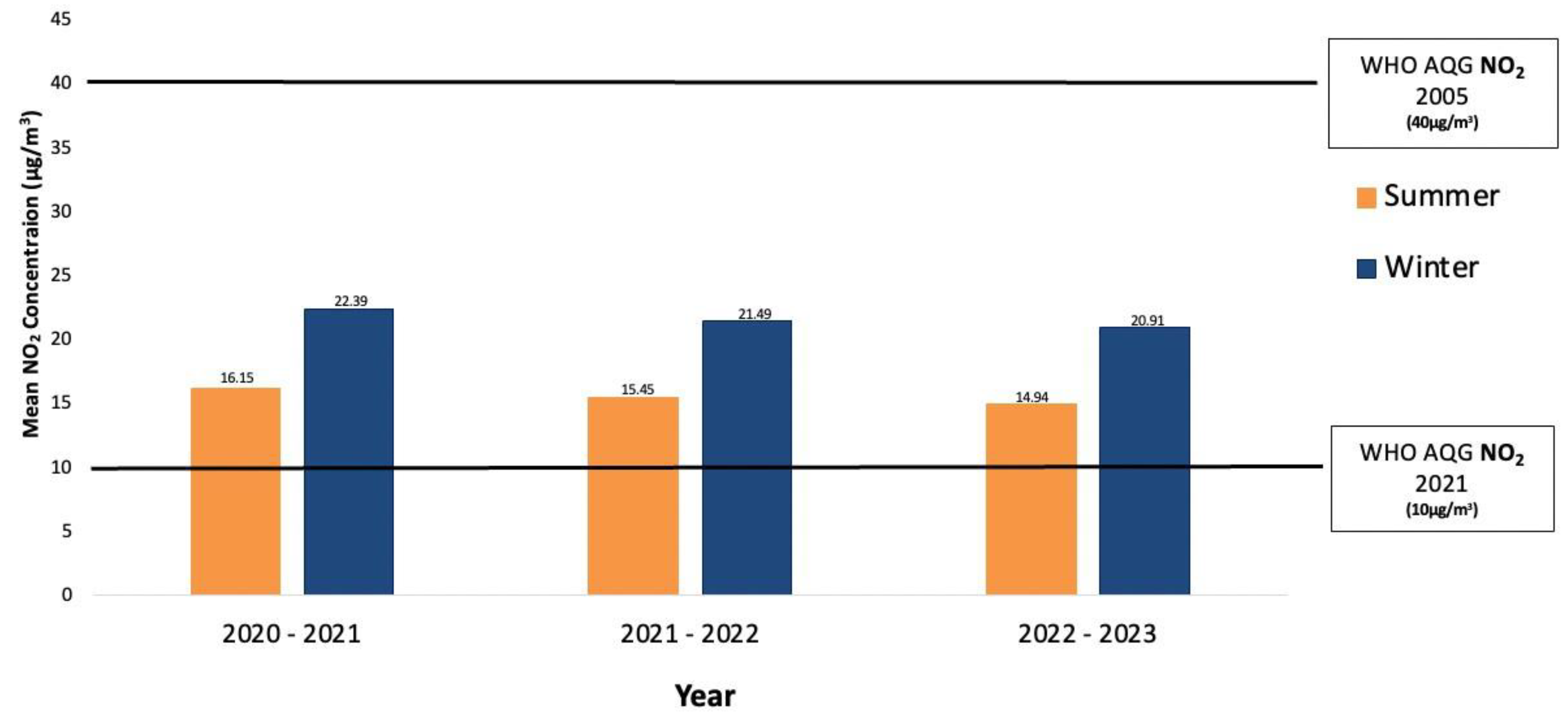
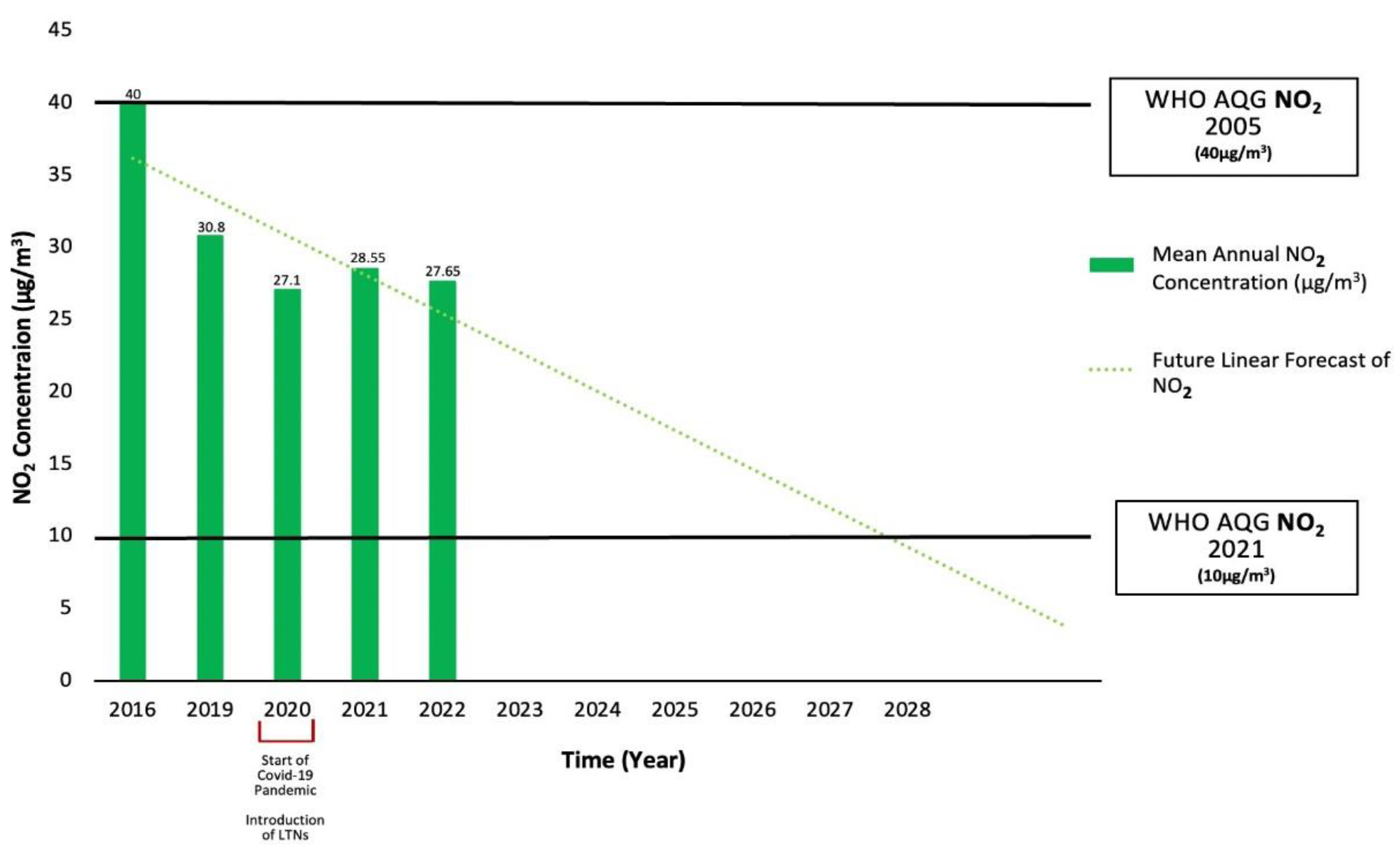
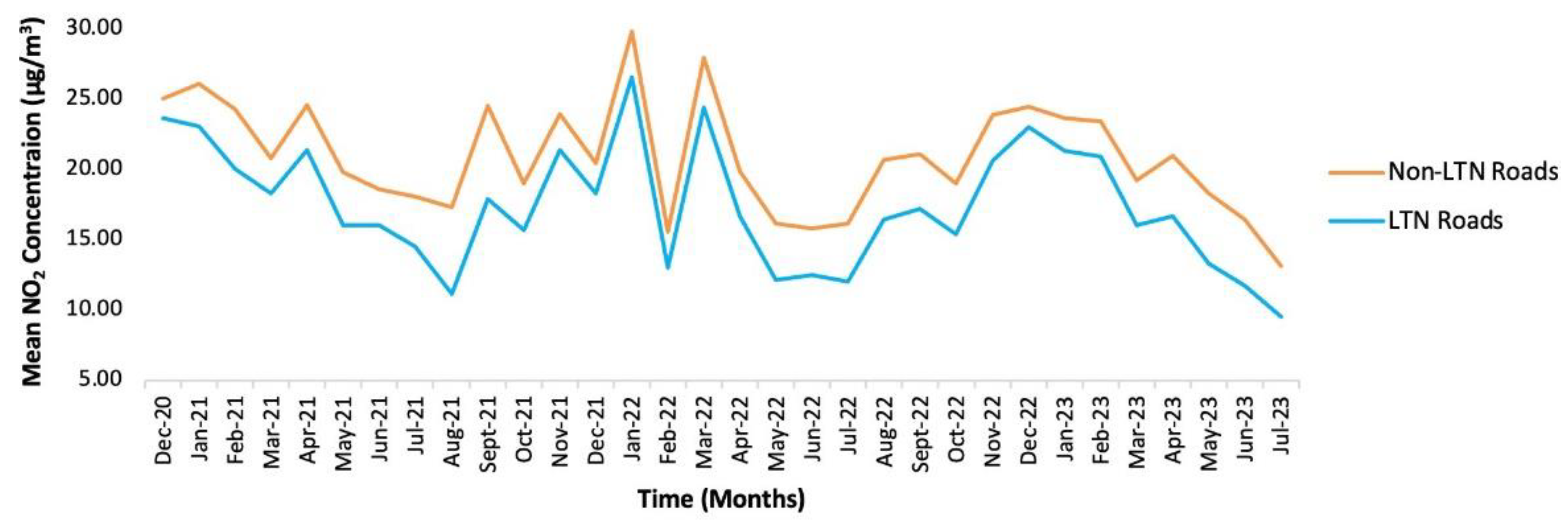
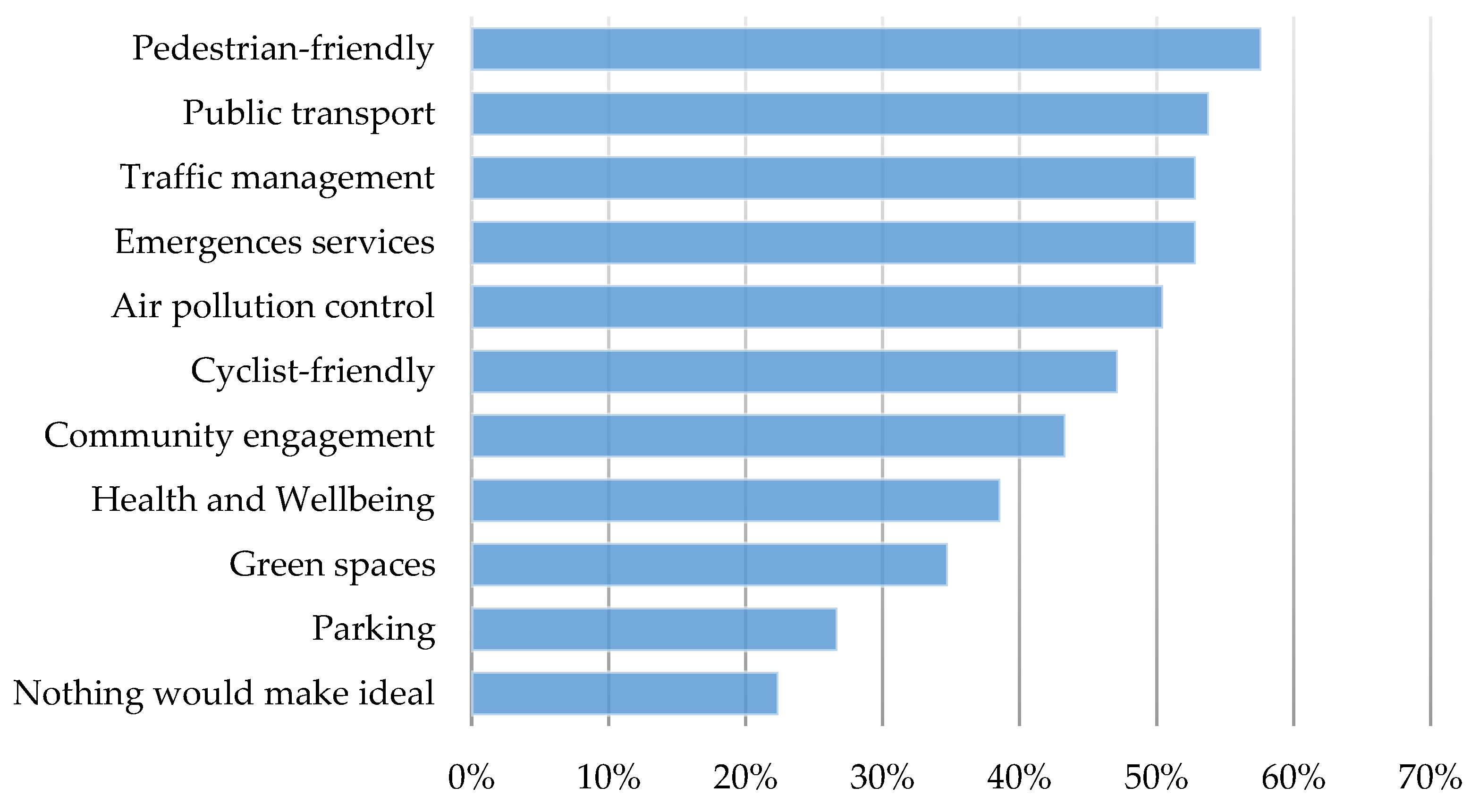
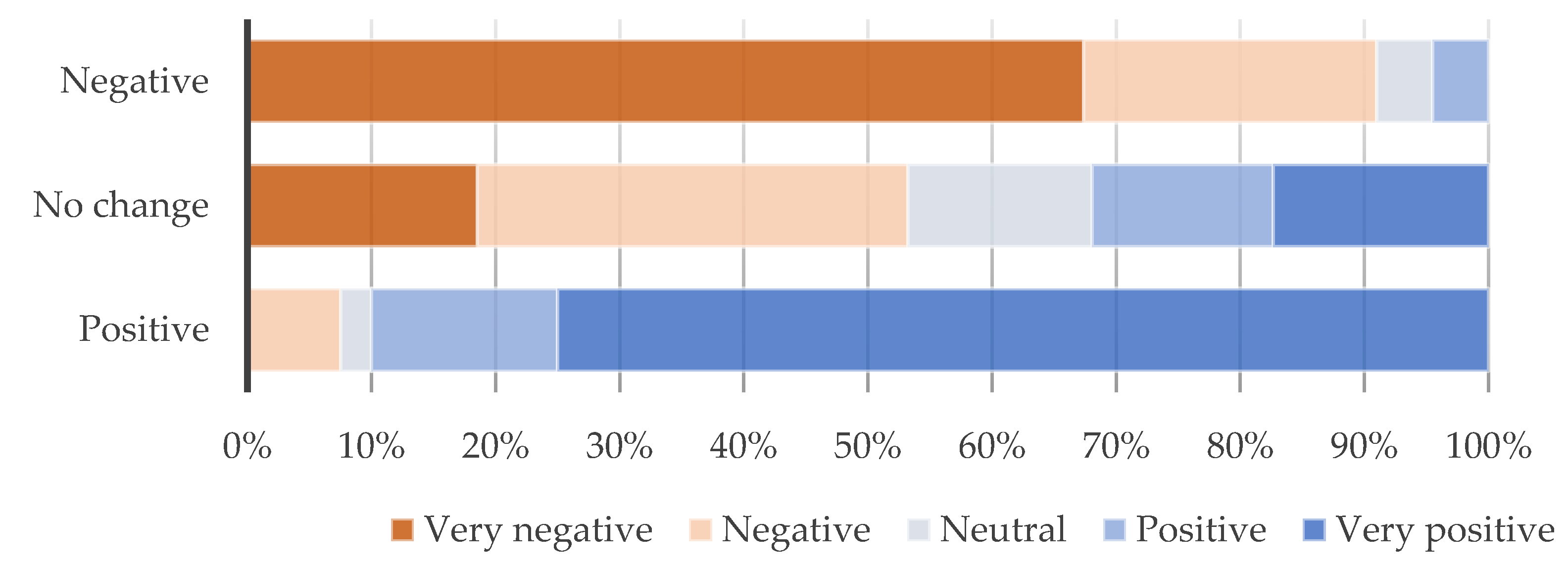
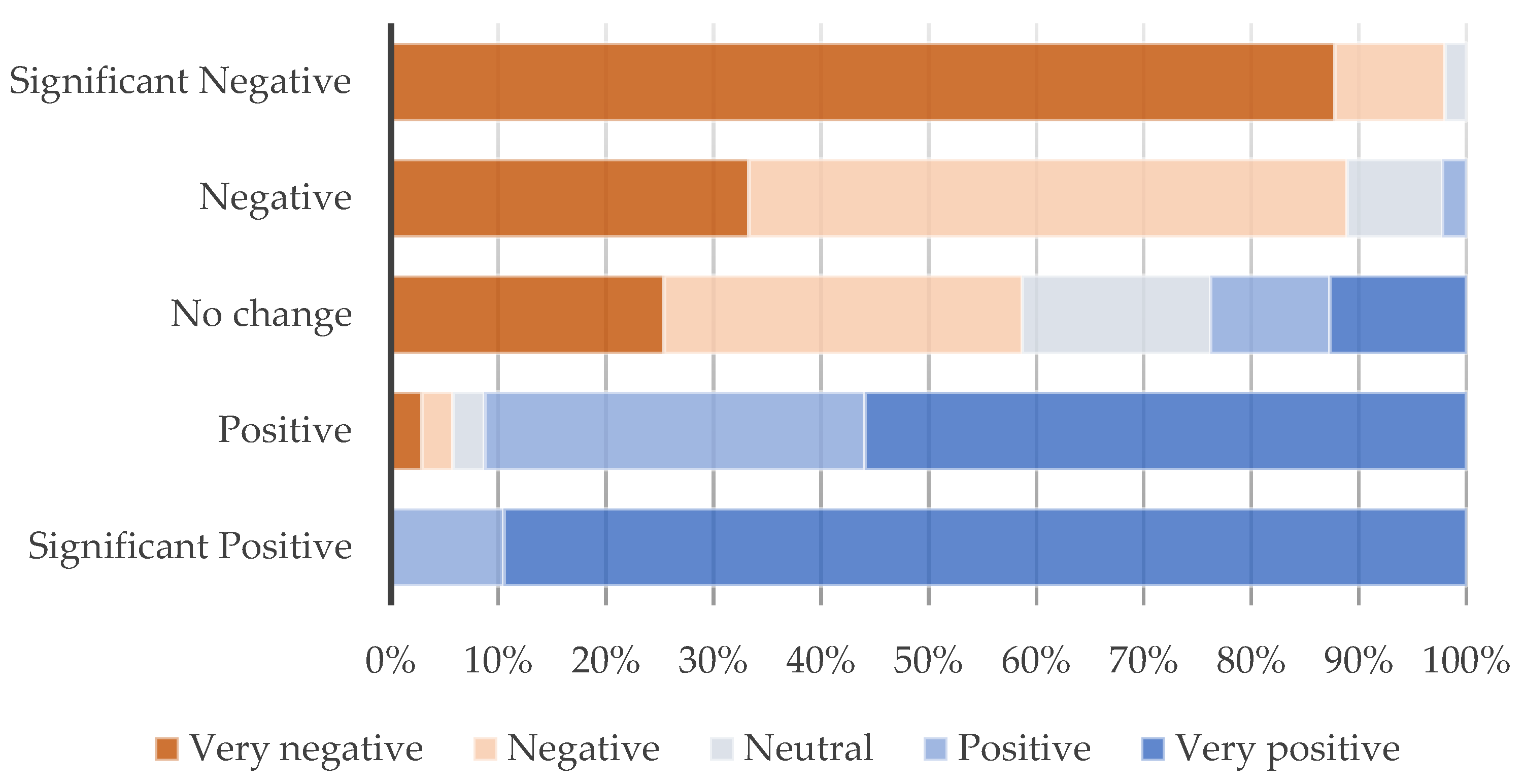
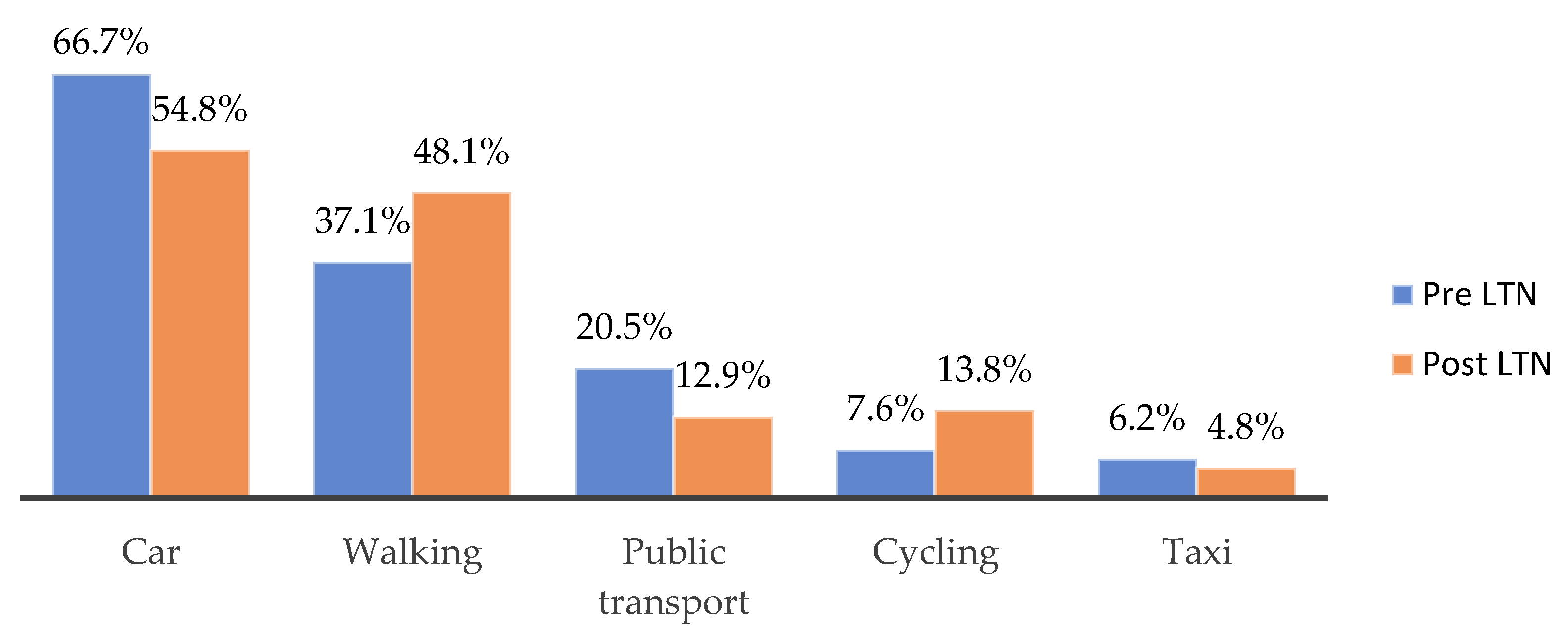

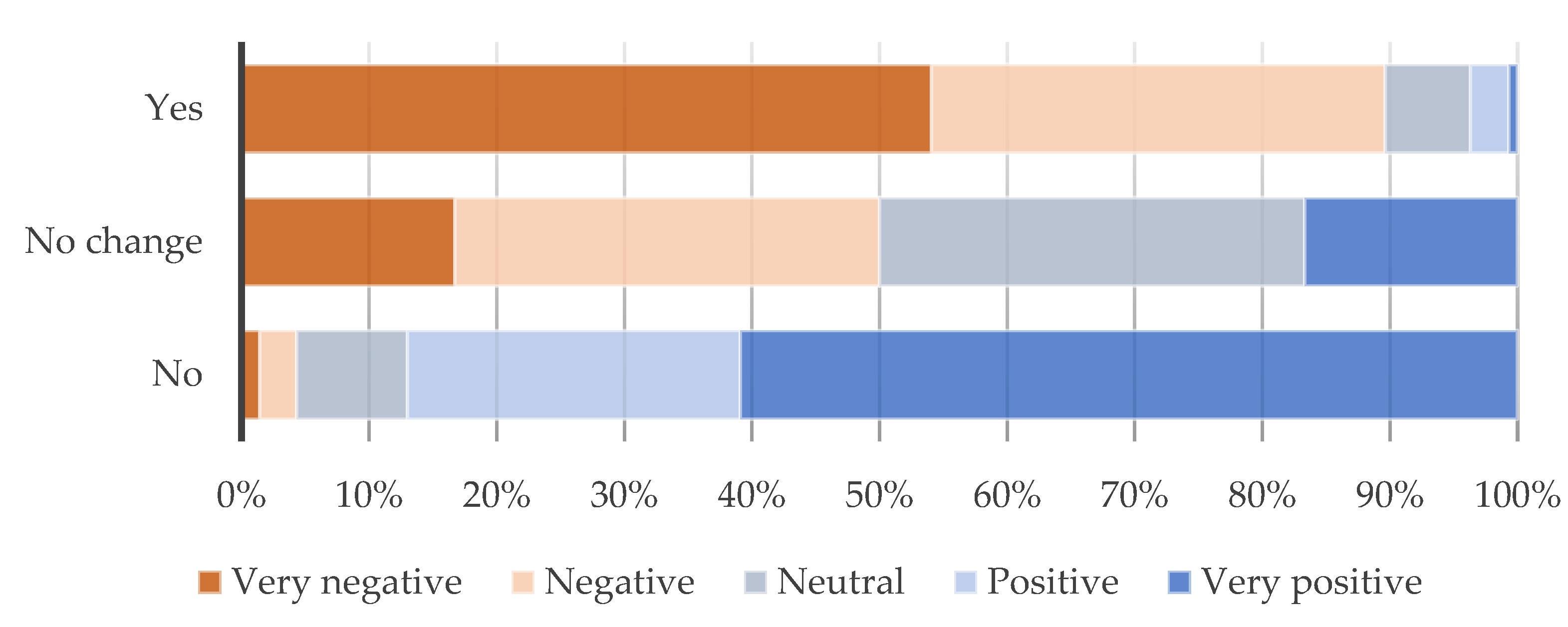
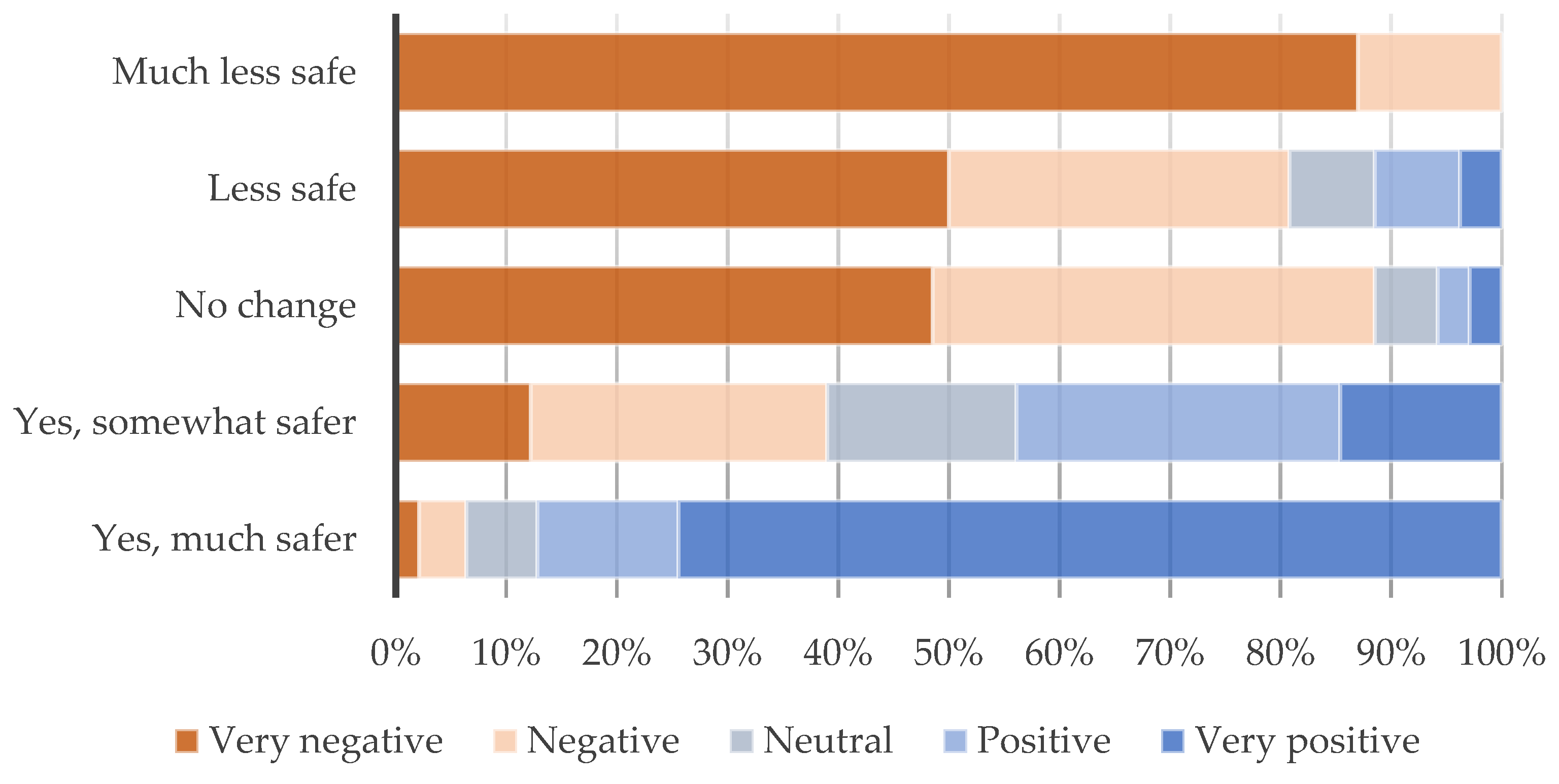
| Pollutant | Averaging Time | 2005 WHO AQGs | 2021 WHO AQGs | 2010 UK AQSs |
|---|---|---|---|---|
| PM2.5, µg/m³ | Annual | 10 | 5 | 20 |
| 24-hour | 25 | 15 | - | |
| PM10, µg/m³ | Annual | 20 | 15 | 40 |
| 24-houra | 50 | 45 | 50 | |
| O3, µg/m³ | Peak season | - | 60 | - |
| 8-hour | 100 | 100 | 100 | |
| NO2, µg/m³ | Annual | 40 | 10 | 40 |
| 24-hour | - | 25 | 200 | |
| SO2, µg/m³ | 24-hour | 20 | 40 | 125 |
| CO2, µg/m³ | 24-hour | - | 4 | - |
| Socio-dem characteristic | Percentage |
|---|---|
| Gender | |
| Male | 42.9 |
| Female | 53.8 |
| Prefer not say | 1.4 |
| Non-binary | 1.9 |
| Age | |
| 18-24 | 12.4 |
| 25-34 | 9.5 |
| 35-44 | 14.3 |
| 45-54 | 21.4 |
| 55-64 | 21.4 |
| 65+ | 21.0 |
| Connection with Kings Heath | |
| Current Resident | 63.8 |
| Past resident lived in KH | 5.2 |
| Live in neighboring area | 28.0 |
| Work | 1.0 |
| Visit | 1.0 |
| No Connection | 1.0 |
| Length of residence | |
| Less than 1 year | 2.2 |
| 1-5 years | 8.7 |
| 6-10 years | 8.7 |
| More than 10 years | 80.4 |
| Very negative |
Negative | Neutral | Positive | Very Positive |
|
|---|---|---|---|---|---|
| General sample | 35.7% | 24.8% | 8.1% | 10.5% | 21.0% |
| Gender* | |||||
| Male | 37.8% | 13.3% | 6.7% | 12.2% | 30.0% |
| Female | 34.5% | 34.5% | 9.7% | 8.8% | 12.4% |
| Prefer not to say | 0.0% | 0.0% | 0.0% | 33.3% | 66.7% |
| Non-binary | 50.0% | 25.0% | 0.0% | 0.0% | 25.0% |
| Age groups | |||||
| 18-24 | 23.1% | 46.2% | 15.4% | 7.7% | 7.7% |
| 25-34 | 40.0% | 20.0% | 5.0% | 10.0% | 25.0% |
| 35-44 | 16.7% | 30.0% | 10.0% | 16.7% | 26.7% |
| 45-54 | 31.1% | 26.7% | 2.2% | 11.1% | 28.9% |
| 55-64 | 44.4% | 17.8% | 13.3% | 8.9% | 15.6% |
| 65+ | 50.0% | 15.9% | 4.5% | 9.1% | 20.5% |
| Percentage of reduction | Negative | Neutral | Positive | Total |
| 0-20 | 9.4% | 35.3% | 65.2% | 29.0% |
| 20-40 | 11.0% | 35.3% | 4.5% | 11.0% |
| 40-60 | 21.3% | 0.0% | 9.1% | 15.7% |
| 60-80 | 4.7% | 0.0% | 1.5% | 3.3% |
| 80-100 | 10.2% | 0.0% | 0.0% | 6.2% |
| None | 14.2% | 0.0% | 0.0% | 8.6% |
| N/A* | 29.1% | 29.4% | 19.7% | 26.2% |
| Average | 48.74 | 27.50 | 11.26 | 32.37 |
| St Dev | 27.18 | 21.05 | 17.47 | 23.99 |
Disclaimer/Publisher’s Note: The statements, opinions and data contained in all publications are solely those of the individual author(s) and contributor(s) and not of MDPI and/or the editor(s). MDPI and/or the editor(s) disclaim responsibility for any injury to people or property resulting from any ideas, methods, instructions or products referred to in the content. |
© 2024 by the authors. Licensee MDPI, Basel, Switzerland. This article is an open access article distributed under the terms and conditions of the Creative Commons Attribution (CC BY) license (http://creativecommons.org/licenses/by/4.0/).





